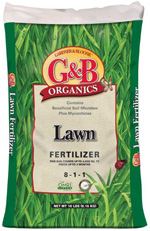|

     
|
 |
Featured Quote: "Nature never did betray the heart that loved her." |
 |
 |
 |
 |

Many palms are slow-growing, and consequently, large specimens are often expensive. But don't be deterred from growing palms; if you provide the right conditions, even small plants will gradually become impressive specimens. Not all palms grow large, and many are compact enough for a tabletop. Some are even small enough to use in a bottle garden while young. The most common mistake is to regard all palms as lovers of hot sunshine and desert-dry air. They often have to cope with both in countries where they grow outdoors, but as houseplants you want them to remain in good condition with unblemished leaves.
|
 |
|
Pothos (Epipremnum aureum) is one of the best known houseplants out there. Tolerant to low light, infrequent watering, and outright neglect, it is best known for its shiny leaves, long, draping foliage, and its ability to purify air where it is kept. Depending on conditions, Pothos will grow shoots that are as long as 6-10' long, dangling from the outside of its pot (in the tropical climates where it is native, these can be as long as 40'. ) This makes it ideal in a hanging basket. Pothos can survive with minimal sunlight, but cannot do entirely without, so plan to place it in a room with a window. It will also do fine under the bright fluorescent tubes most offices have, so if you want to take it to work with you, don't worry about windows. Care for this is very simple. Let the dirt dry out before watering again. Too much water can cause root rot and wash out nutrients in the soil. Too much watering will cause drooping and possibly black spots on the leaves. The best way to tell if it needs water is to use a finger and dip it into the soil. If you get wet dirt on your finger, wait a couple more days. They prefer slightly acidic soil, but as long as your soil drains well, it should be fine. The plant can either be allowed to grow long vines to drape down around it, or pruned up to give it a bushier shape. As with any plant, confine your trimming to less than 1/3rd of the volume of the plant. When the leaves start to regularly droop, even upon watering, it is a good sign that it's time to transplant into a larger container. If you're cursing your black thumb, or just hoping for some low-maintenance greenery in your home, give Pothos a try. |
 |
|
Lilacs are one of the most beloved plants in the U.S. and their sweetly scented, panicles of flowers are something that gardeners the world over look forward to every spring. Lilacs date all the way back to 16th Century European gardens, and westward pioneers would bring along cuttings of their prized specimens to plant once they settled in their new home. Lilacs are actually related to the olive family and other scented plants, including privets and jasmine. But the flowers of the Syringa species are the showiest. In fact, sometimes the stems are so heavy from the weight of the blooms that they nod, giving the plant an arching, graceful appearance. Many lilacs are hybrids between the common lilac and other species. The subtle differences such as size, color and flower shape allow gardeners to use them in almost any situation. In cold regions, lilacs do best in full sun locations, while in hot summer areas they perform best shaded from the afternoon sun. Lilacs are deciduous and come in a variety of colors that will please even the most discriminate gardener. Flower colors range from true lilac, red lilac, and lavender-lilac to blue, pink, purple, white, creamy yellow and even variegated selections. Most lilacs don't need to be pruned at all, but if they require a little shaping it's best to prune them immediately after they bloom. Lilacs do best with regular watering although once established, they don't usually require water more than once per week. They are fairly pest and disease resistant and look their best when fed every two months, starting after the blooms are finished until the end of summer. We have a great selection of lilacs available in the nursery now. We invite you to visit us, view our selection, and select your plants before they find a home in your neighbor's garden! |
 |
|
When xeriscape is mentioned, many people think of cactus and sand--or rock gardens. Mind you, both cactus gardens and rock gardens can be quite attractive. But that is not all xeriscaping allows.
You can have a xeriscape landscape that is fully planted, colorful--and water-conserving. Nor do you have to use only drought-tolerant plants. The idea is to reduce overall water use by grouping plants with similar needs together--so you can have one area that uses some extra water and another area where you need no more water than nature provides.
If you grow edible plants, the same principle applies.
The seven principles of xeriscape:
If you've just moved in to a new place and want a whole new landscape, consider xeriscape. We'd advise you, in that situation, to hire a professional landscaper to help you design the landscape--and to do the hard work for you. Doing a whole landscape at once is too much for most individuals. But you can use the "bit by bit" approach or a simple substitution approach, and move your landscape gradually to xeriscape. Perhaps you have a problem area where it's difficult to keep your plants growing well, an area that is difficult to irrigate, or a lawn area that's hard to mow or keep green. Look at these areas as candidates for the first moves to xeriscape. One of the major things to look at when xeriscaping is, "Can I get rid of some of that lawn?" Out of all the things we grow in our yards, turf is usually the biggest overall water-user. If you live in an area with a homeowner's association that requires you to have a certain percentage of lawn, at least make your long-term plans to get the lawn down to the minimal acceptable percentage (or get the rule changed). When planning a xeriscaped area, keep in mind that curves are more natural (and easier to mow around) than sharp angles. Also look at the soil type, the amount of sun or shade, elevation, and ease of access. Do you have some plants that already do well in that area, even if neglected? Keep them for xeriscaping in that particular micro-climate in your yard. Remove, or move, plants that are not doing well and amend the soil before planting any new plants. Then mulch. Keep in mind that even xeriscape plants will need extra water when first planted--until established. Once established, however, they will need much less maintenance than other areas. You may find you like xeriscape so much you'll continue till your whole yard (or as much as possible) is xeriscaped. You can then lie in the hammock you bought with the savings on your water bill, sipping a cool drink on a hot summer day, and watching your neighbors sweating over their vast expanses of turf. Have fun! |
 |
|
What's the difference between a plant fungus and a plant virus? Answer: The big difference is that most fungus problems can be controlled with fungicides, while viruses cannot. A fungus normally attacks the foliage, while a virus can attack every part of a plant--eventually killing it. Most fungus is transmitted through the air while most viruses are transmitted through the soil. The most common types of fungus are leaf spots (red, brown, or black), mildew (white), and types of rust (orange and brown). Leaf spots normally affect both sides of leaves, mildew the top side, and rusts underneath. They are fairly easy to prevent and control with a fungicide. Most viruses enter a plant through the roots. They are prevalent in poorly draining or over-watered soils that never dry out. Many viruses cause leaf wilt; you will see this in the individual leaves--or the whole plant may look sickly and drooping. The only solution when a virus is identified is to try to let the soil dry out. If you catch it early enough, some plants can recover. Unfortunately, by the time most people discover a virus problem, it's usually too late. |

 click here for a printer friendly version of this page
click here for a printer friendly version of this page
 |
Written content © Garden Partners LLC, or respective authors. All Rights Reserved. Privacy Policy. All written content contained in this site is protected by United States copyright law and may not be reproduced, distributed, transmitted, displayed, published, or broadcast without prior written permission of Garden Partners, LLC. You may not alter or remove any trademark, copyright or other notice from copies of the content. |




